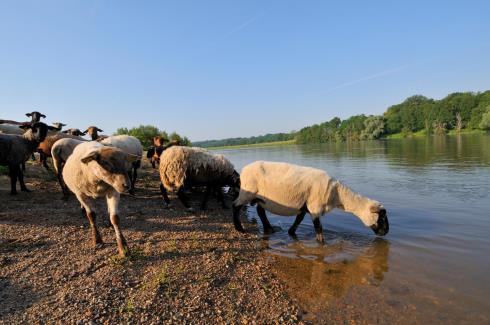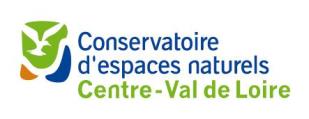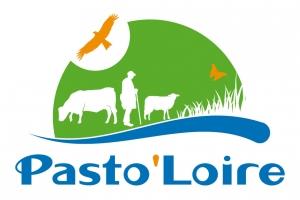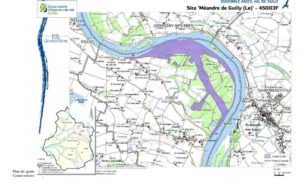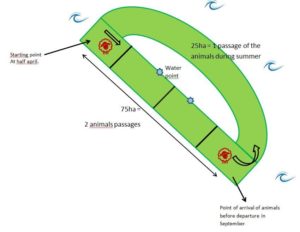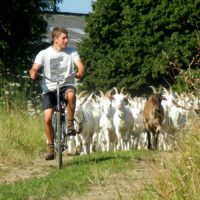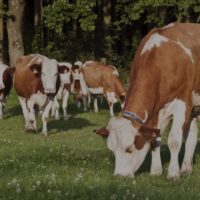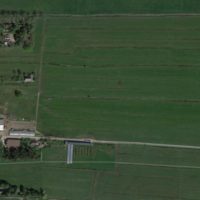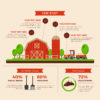Description
Background
In 1999, the CEN Centre was looking for sheep farmers to graze spaces in order to avoid mechanization in these areas and to preserve biodiversity. At the time, Didier Crèche is convinced and motivated by the approach and adheres from the start. For him it perfectly combined nature and agriculture as well as the conservation of spaces to see races for the Solognote which is very suitable for this type of pasture. He found the original concept and the idea of assuming a shepherd’s post was interesting. Moreover, the pioneering side in a non-mountainous region pleased him.
The evolution of the gait then led them to the banks of the Loire with the Pasto’Loire project. The expanses bordering the Loire naturally tend to become wooded since the second half of the 20th century. Grasslands and lawns are “closed”, gradually invaded by shrubs and bushes. The planting of this shrubby vegetation is to the detriment of plant and animal species that prefer the light and heat conditions offered by so-called “open” environments.
In addition to the biological diversity they harbor, these areas have other interests in relation to the functionality of the watercourse: they act as expansion fields for the river, contributing to the purification of water and maintaining its quality, but also limiting the impact of floods downstream.
Detailed description
Didier Crèche is today a farmer grazing on the edge of the Loire in Loiret. His flock grazing 100ha and intervenes today on the Méandre de Guilly.
Under reciprocal contract for a period of 5 years with CEN41 the ewes value and reopen spaces in the Loire, grasslands and promote biodiversity. The Solognote breed is very suitable for this type of pasture and the breeder is also very involved in the selection of the breed almost extinct a few years ago.
The total area of 100ha is divided into 5 plots. The grazing season starts around April 15th after the kicks and hard until early September.The part situated at the edge of the river is pasture in full summer because it is the least drying and shaded part for the animals which at the same time have a water point assured.
The breeder is located far from the site; he has on the spot of a foot to earth (caravan) to optimize his time and its displacements.
On the spot he carries out work of fences and movements of herds helped by 2 dogs of herds.
Results
The result obtained here is mostly ecological and environmental and not financial or productivist. The goal of the project and the breeder by participating is not to improve its production but to reopen landscapes with animals and brought back forage varieties, insects …
For the farmer, it is the way to make the link between nature and agriculture and it is a satisfaction to see its animals at the service of biodiversity.
However, in return for the time, the commitment, the costs … the farmer has to touch the MAE up to about 20.000 € / year, unfortunately he is still not affected at the moment.
Adoption criteria
Innovation can only be adopted if there is financial compensation for the breeder of any kind. Indeed the human and material investment requires that it is compensated otherwise it is not viable.
The distance is also a brake, the farmer currently has 1h30 drive between his place of exploitation and the grazing site, this is very important and it would be easier for someone closer to intervene quickly and lose also less time during trips.
Future prospects
The farmer is practically reaching retirement age but unfortunately does not want his farm to be taken over by a young person because he has not yet touched his EAW, he does not want to put a young person in danger with conditions of departure too precarious. He is doing well because he has a stable situation, posed and is at the end of his career but a young person who has investments to amortize this would be impossible.
One of the main threats to this type of project is therefore the financial aspect and the compensation for farmers.
The project is a more ecological and environmental level for society so it must be better valued financially. We sometimes favor other cultural actions … but projects like this one are poorly supported.
In addition, another threat to this type of innovation is that the conservatories and other organizations at the head of this kind of projects do not add too much constraints for the breeders in terms of fences, treatments, management of spaces … Otherwise, it will be difficult to keep economic profitability, animal production and working time coinciding with the environmental side.
Farm description
- 1 annual work unit
- Sheep breeding
- 220 ewes
- 142ha totally of grass of which 100 of eco pastoralism
- Objective of productivity: 1 lamb/ewe
Climate
Climate is continental with cold winter and warm summer. Climatology and soils are not conducive to good grass growth throughout the year.

